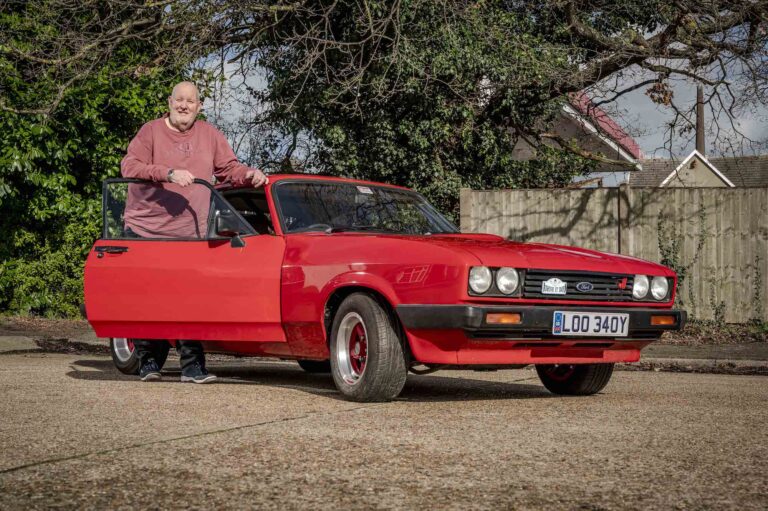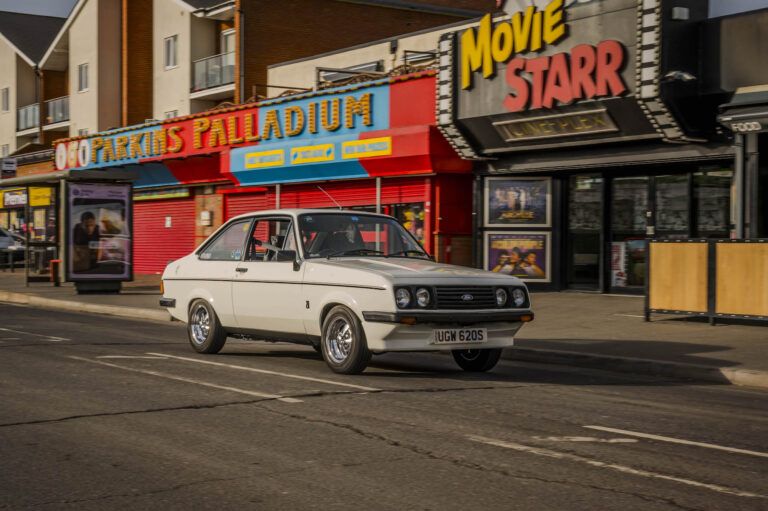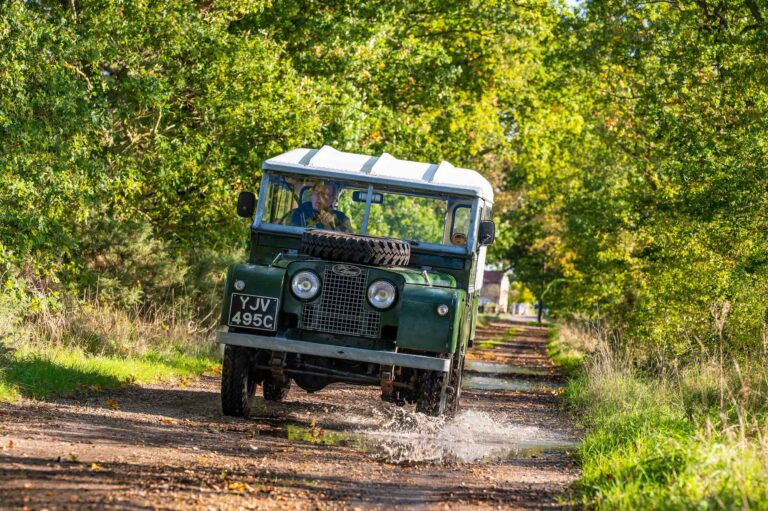When Albie Carr took his Corvette Sting Ray off the road in 2000, his sole aim was to have the cylinder heads converted to run on unleaded petrol.
More than 22 years later, he’s finally completed what turned into, almost by stealth, a stunning nut and bolt restoration of his ‘63 convertible.
Pretty much every part of the silver Chevy, bought in 1983, has either been refurbished or replaced, with most of the work undertaken by Albie in his garage at home.
“It wasn’t the plan to completely restore it, but the paintwork wasn’t very good, and I kept thinking I should really do something with it,” he says. “I then decided to take the engine out, then thought I would do the suspension, and then it went from one thing to another.”
The Corvette was finally ready for its first MoT this century a few weeks before we visited Albie at his home in Great Yarmouth.
“I only took it round the corner, about half a mile, and I’d forgotten how many people look at it,” he says. “Coming back there was a lot of traffic, but everything stops to let you out. If you were in an ordinary car you wouldn’t get out, but they all want to see what it is.
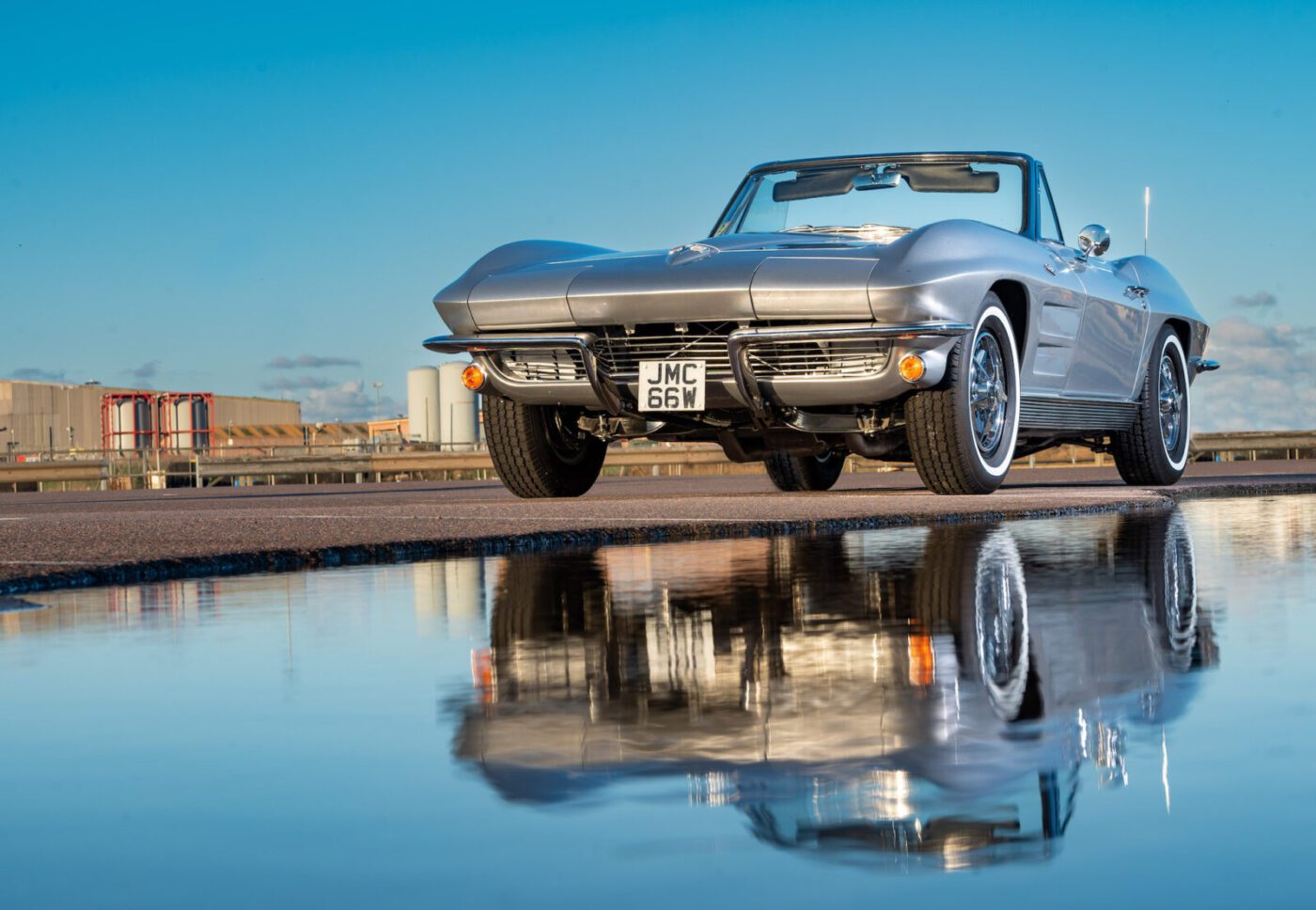
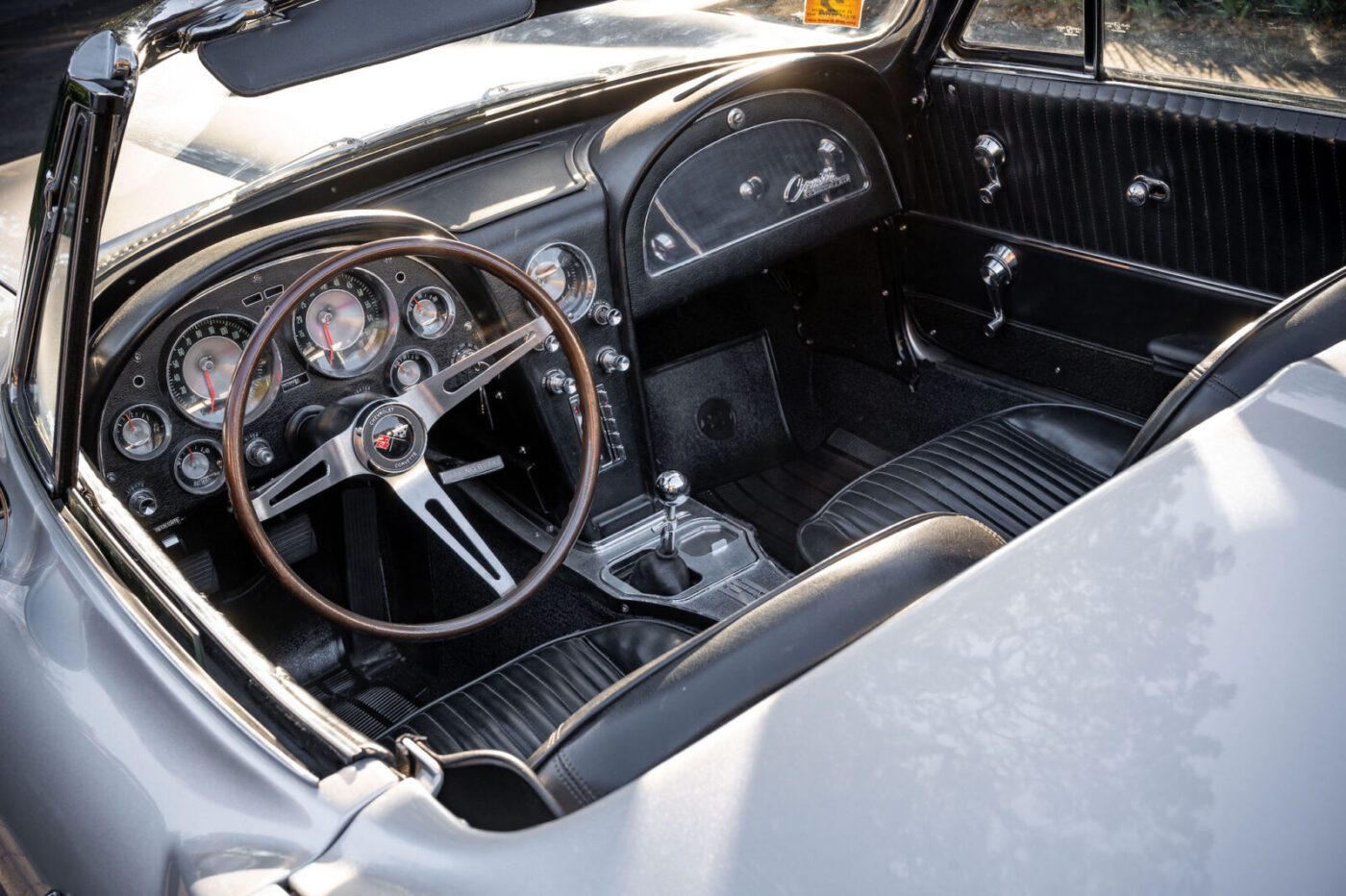
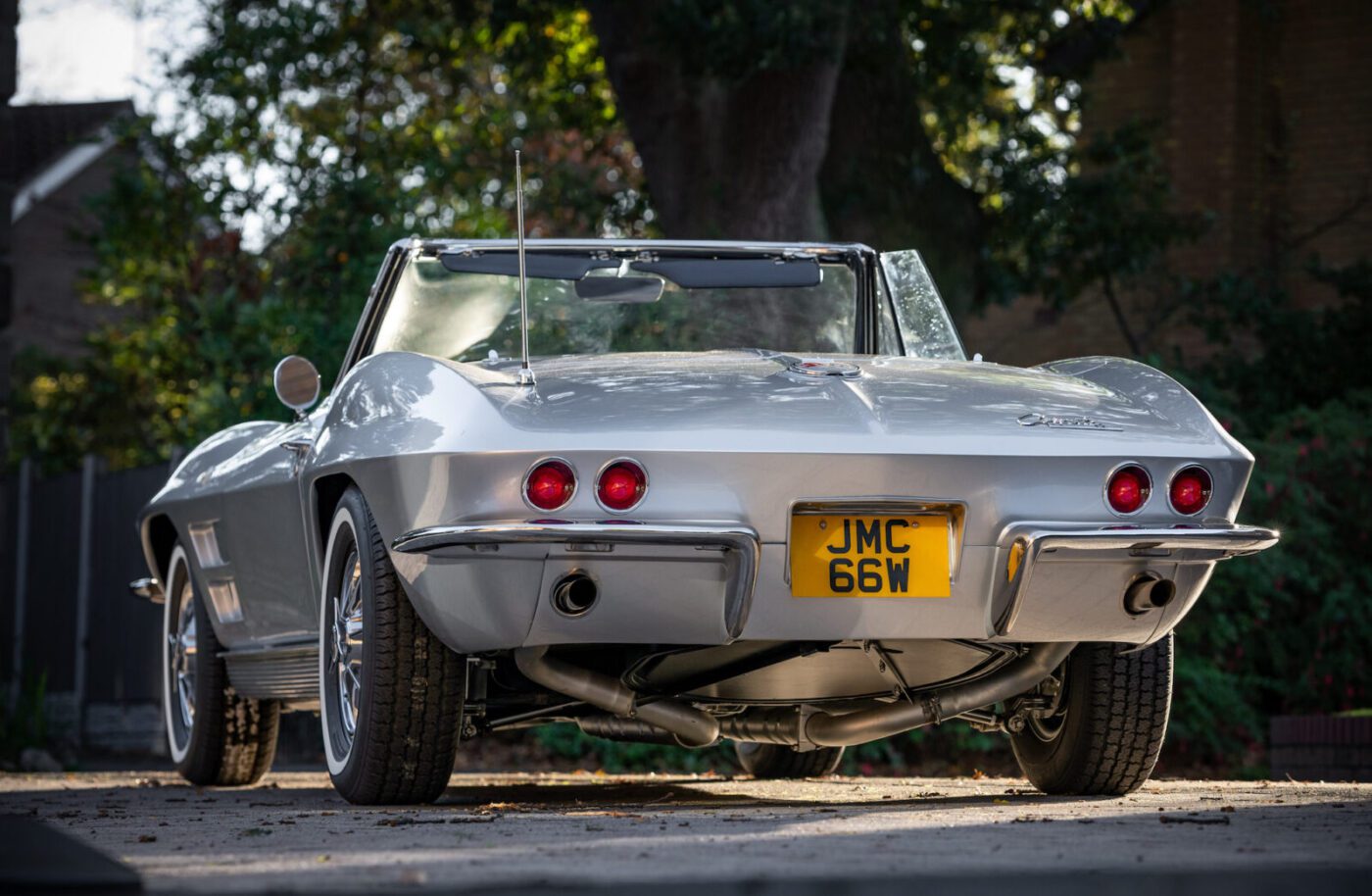
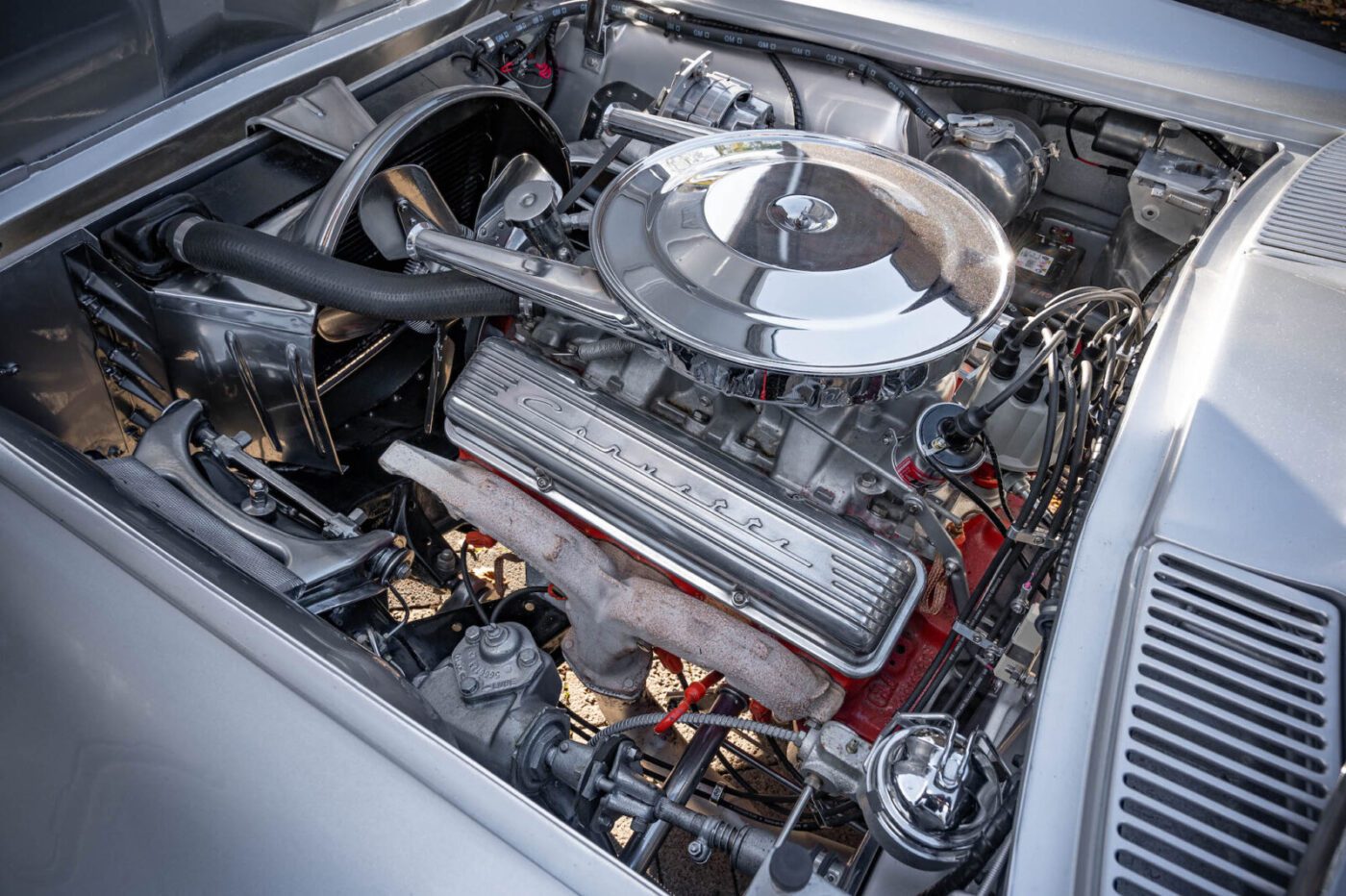
“When I went to get petrol, there were no other cars on the forecourt, but by the time I’d filled up two cars had come in and they’d both asked what it was.”
The answer, of course, is one of the most beautiful American cars of all time, a razor-sharp design that looks stunning from every angle and as fresh today as it did in 1963.
It’s a world away from Albie’s first car, a Ford Popular bought for £25 at the age of 18, moving on to a Mini which he heavily modified.
Born in Newcastle, his family moved first to Beverley in Yorkshire, where he began an apprenticeship at Brough Aircraft, and then to the Norfolk coast, where he completed his training as a marine engineer.
Speaking in a hybrid Geordie / Norfolk accent, Albie recalls watching American crime drama Hardcastle and McCormick in 1983, and falling for the black Corvette Sting Ray driven by actor Brain Keith, aka Judge Milton C Hardcastle.
“I saw it and thought ‘that’s nice’ – it just looked different,” he says, booking a week’s holiday with his wife Heather to find his dream car somewhere in the UK.
“We were going to tour the country. I said to Heather, ‘I’ve got all these places with Corvettes for sale, so we’ll just make a plan and go around and have a look at them’.
READ MORE ABOUT SOME OF OUR GREATEST CLASSIC CARS WITH

A series of articles on our Cult Classics site.
“I nearly bought one in Yarmouth, but it caught fire, and then I noticed that Stalham kept popping up in the searches, which is not far from here.”
Albie and Heather nipped over to Corvette Kingdom one Sunday morning to have a look around, and this car was outside.
Corvette Kingdom owner, the late Ray Groves, who had popped in to get some paperwork, offered Albie a test drive.
“It was not very positive on the steering, not very good on the brakes, but I thought ‘yeah, I like it’,” he smiles. “You get used to all that in the end.”
The week’s holiday was no longer required, but before Albie could pick up the Corvette he needed to raise the £3,800 asking price, which meant a trip to see the bank manager.
“In the ‘80s, if you saw the bank manager you were usually in trouble,” he says. “He was so awkward, and said it would take a week or two get a decision on the loan.
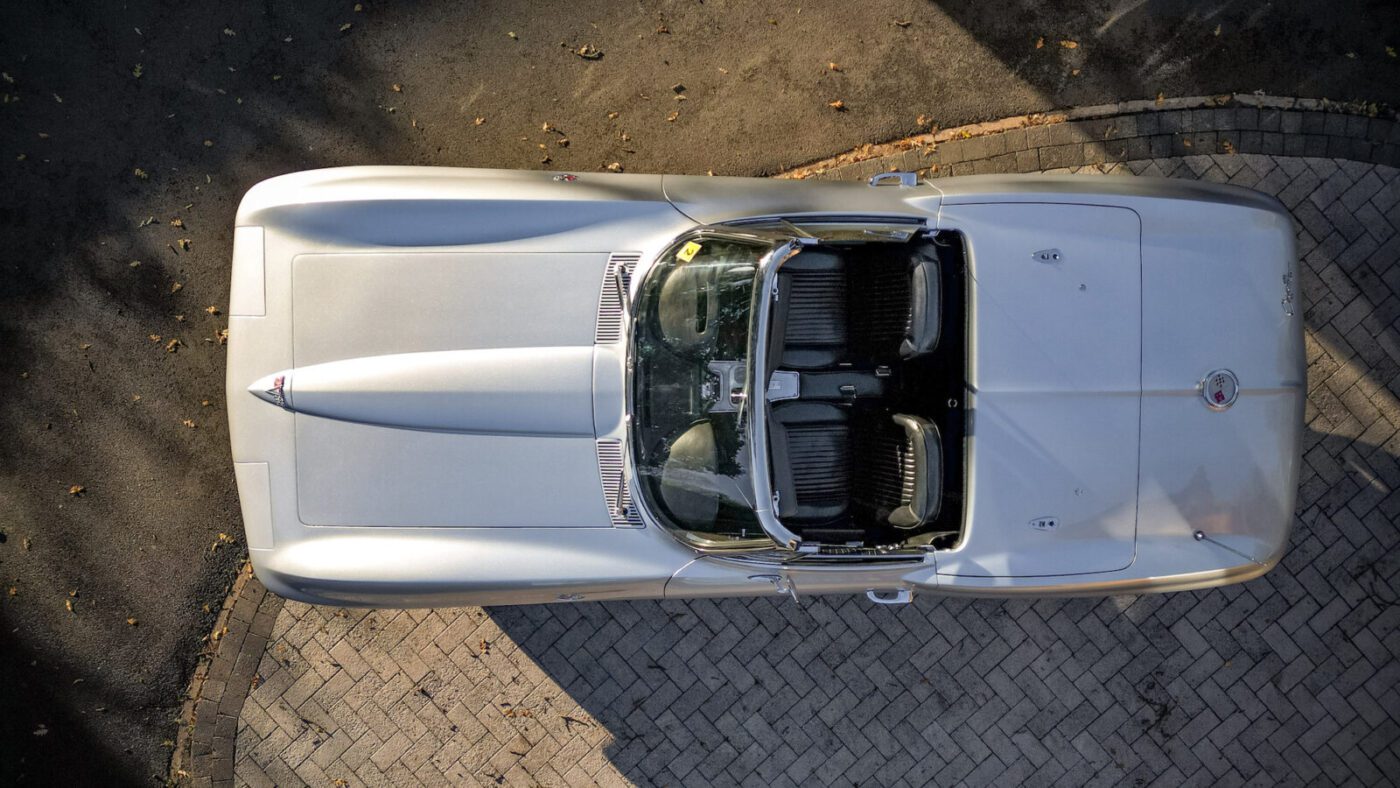
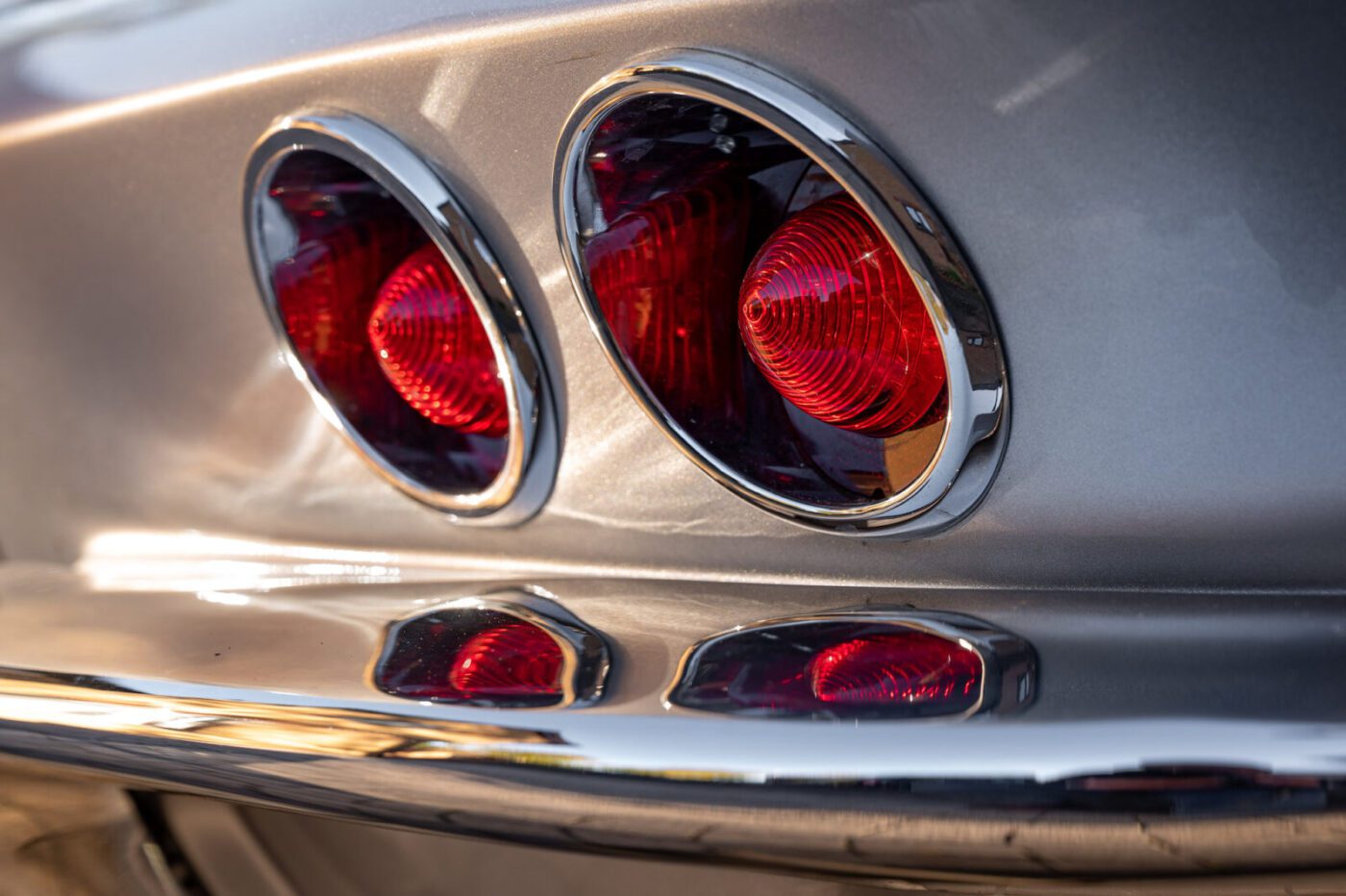
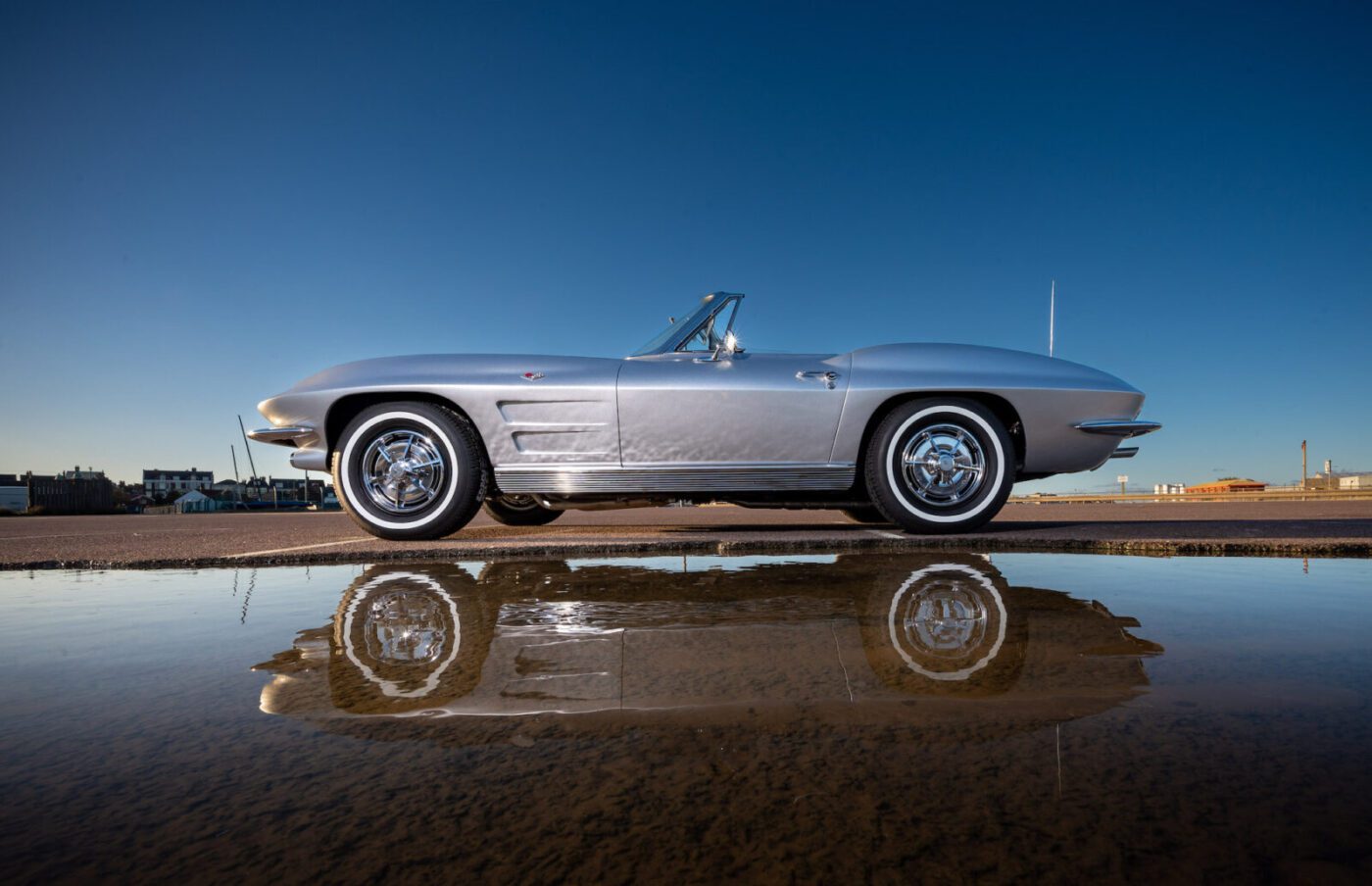
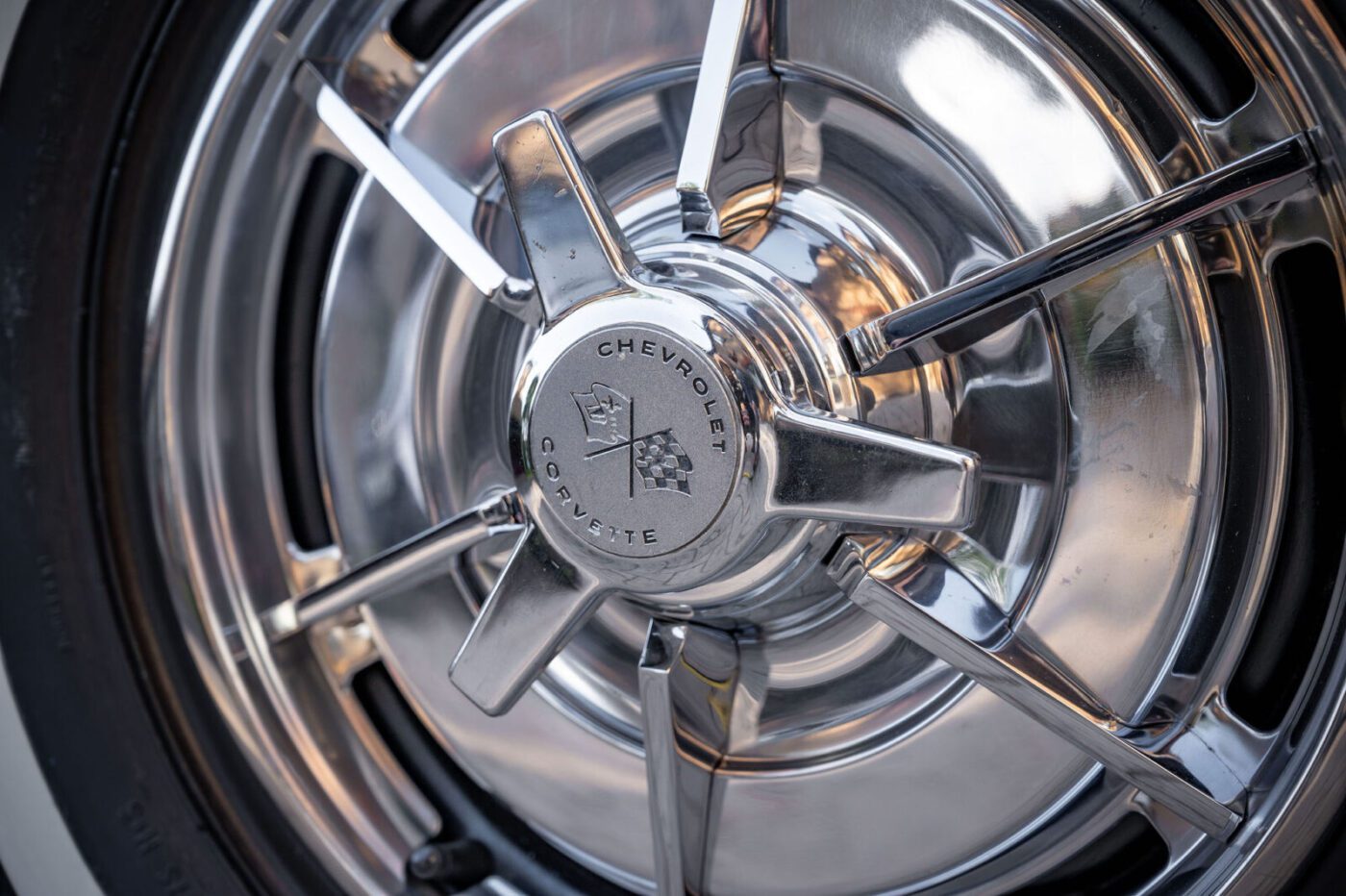
“The next day I got a phone call, ‘do you want to come in and get your loan?’ I went in and he was a completely different bloke. I said ‘you’ve changed your tune since yesterday’. He said loans on cars were the worst loans they did because the cars lose money so quickly and people get fed up with them and don’t want to pay for it anymore.
“I asked him what made him change his mind, and he said ‘I know nothing about cars, but I got in touch with a man at an insurance company, told him what it was and he said ‘if he doesn’t buy it, I’ll buy it’.
“That’s the only bank loan I’ve ever had.”
The ‘63 Corvette C2 came with a 327 cu in (5.4-litre) small block V8, producing 250bhp in standard form, and was a huge improvement on the C1 it replaced.
Car & Driver magazine described it as ‘incredibly close to perfection’ on smooth roads, with a feeling of ‘sheer astonishment’ when cornering ‘in perfect balance’.
Clearly, all of this must be judged against the standards of the time, in particular the standards of the American cars it competed with.
81.5% of customers could get a cheaper quote over the phone
Protect your car with tailor-made classic car insurance, including agreed value cover and discounts for limited mileage and owners club discounts

Albie admits he very rarely used the power lurking under that sharply-cut bonnet.
“I did it once,” he says. “I pulled away and spun the wheels, and got two flat tyres. I managed to get to a petrol station and pump them up and they were all right. But I thought ‘well, this is silly’. “You’d be sitting at traffic lights, cars would come up and start revving up to race you. I used to rev up a bit, but then I’d pootle away and they used to shoot off like a rocket. I’d just let them go – there’s no point.”
The Chevy was always a “hobby car”, mostly used for weekend runs to the north Norfolk coast, and nights out, although Albie did use it for work occasionally.
Heather would accompany her husband on some of these trips and, while she likes the car, she isn’t a big fan of the noise it makes or the attention it attracts.
“If it was parked up, we’d come back and there’d be people looking at it, and we’d leave it until there was no-one there,” adds Albie, 75.
“Back in the day, two women even followed me all the way home because they wanted to know more about it.”
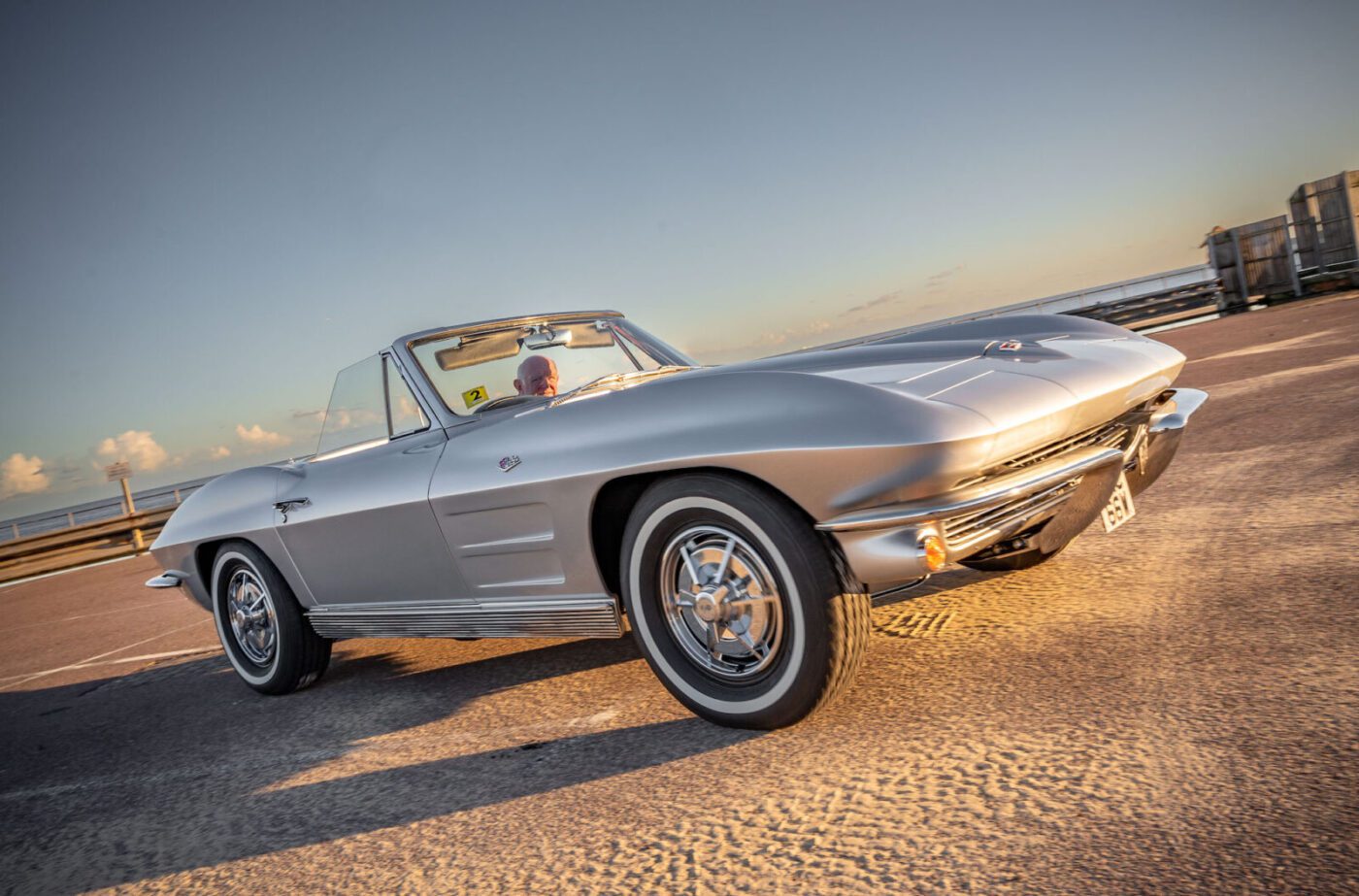
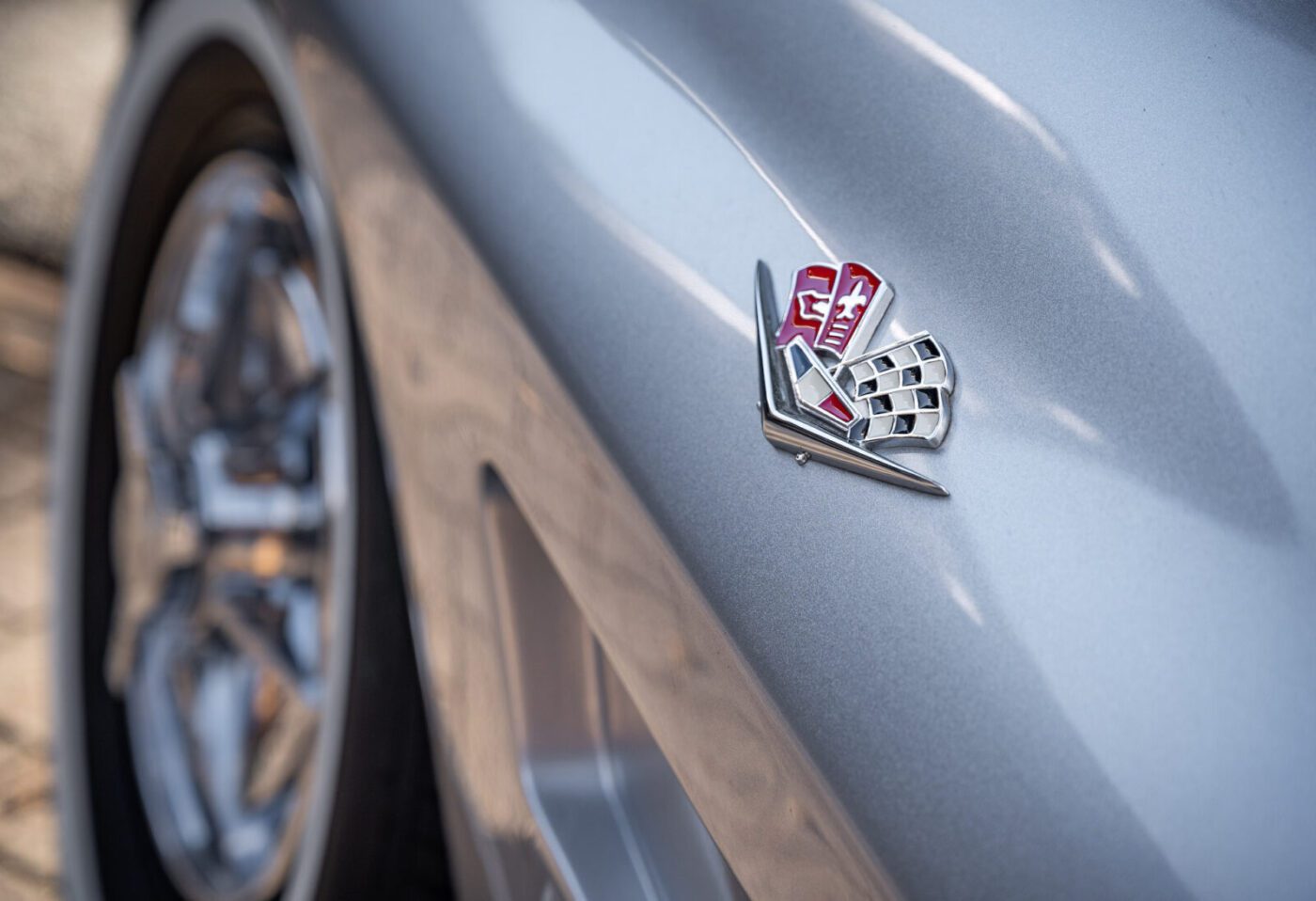
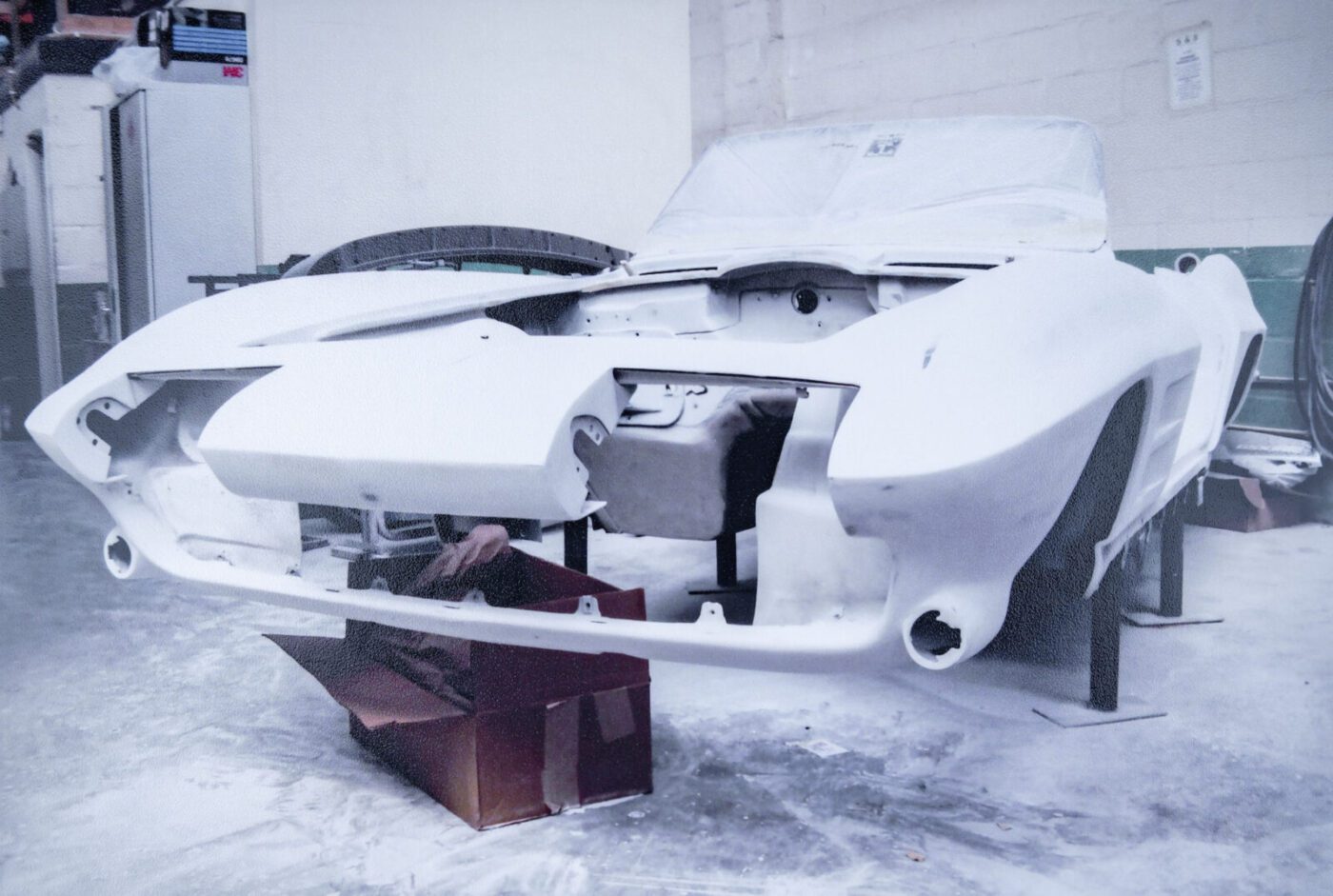
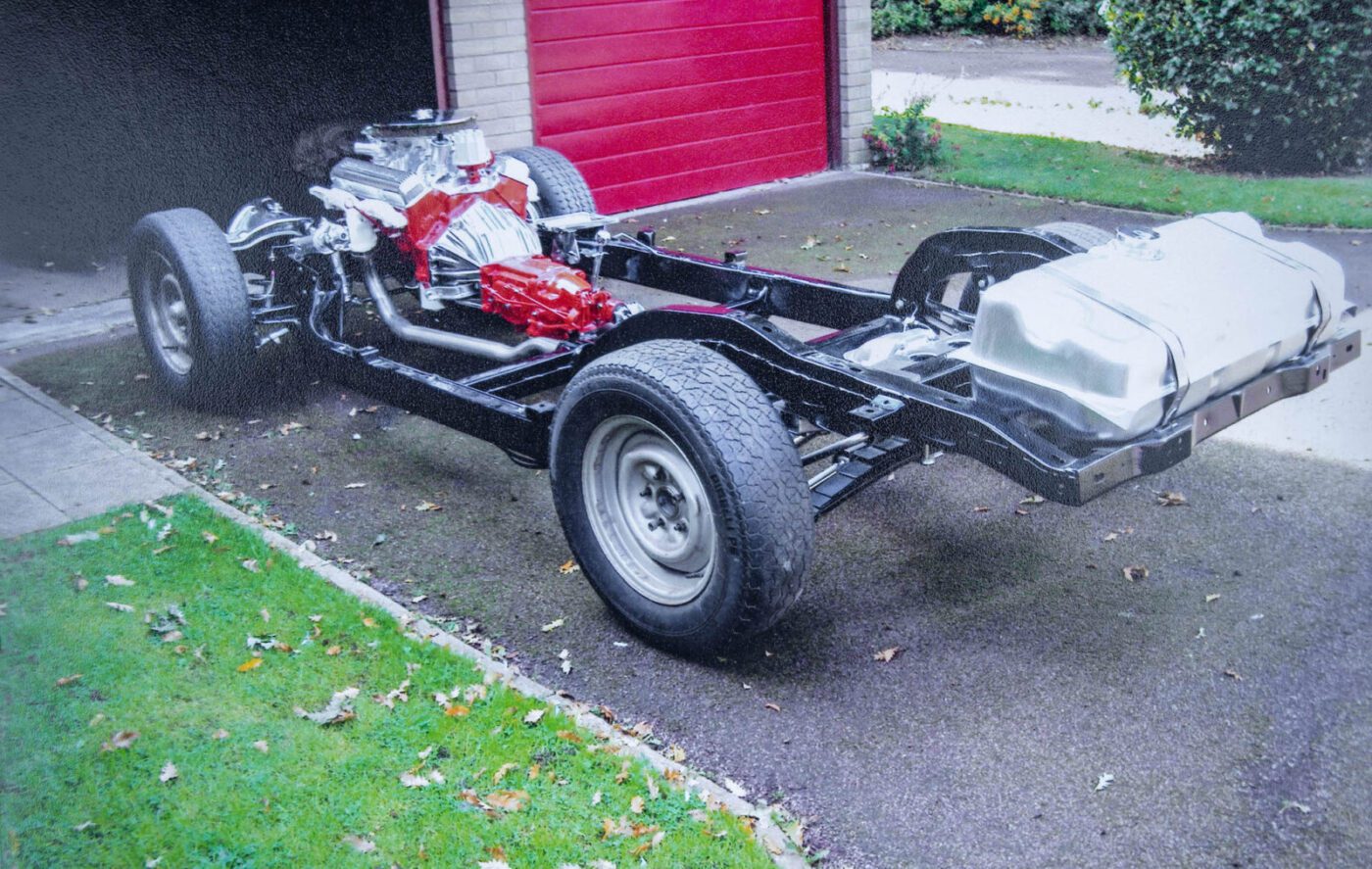
When leaded petrol was banned in the UK, Albie took the car off the road, in theory temporarily.
He took the cylinder heads to an engine specialist to have the hardened valve seats inserted to enable the Sting Ray to run on unleaded, but things didn’t go to plan.
“They’d had them for a few months, and kept saying they would be ready soon, so I finally had to go up there and see where they were,” he says. “They’d machined into all the waterways to put the inserts and seats in, so they had to send it somewhere else to have it all welded up.
“I just wish you’d told me that, because it’s cheaper to buy new heads. It cost just over £500, and I could have bought new heads for half that.”
It was while the car was sitting idle that Albie started mulling over a larger project.
“Everything worked, but it wasn’t in good condition, the paint was a bit faded, and the inside was tatty,” he says. “I was just going to convert the heads to unleaded, that was all I was going to do.”
But one thing led to another, and soon Albie had the body off, stripping it back to bare fibreglass in preparation for a respray.
READ MORE ABOUT SOME OF OUR GREATEST CLASSIC CARS WITH

A series of articles on our Cult Classics site.
Although it was silver when he bought it, he found a small patch of its original Nassau Blue paintwork.
“It’s not a very nice blue,” he says, “so I can understand why someone painted it silver.”
So it would again be silver, but it took two attempts to get the right silver.
“They sprayed it, but the bloke who owned the company phoned me up and said ‘do you want to come and have a look at it?’” remembers Albie. “To be honest it didn’t look much different to when it went in there, and he looked at me and said ‘it’s not what you wanted is it?’ I said ‘no, not really’.
“He got a bit of what it is now, a Mercedes silver, sprayed it on a test piece, and said ‘what about that?’ I said ‘yeah’ and they sprayed it again for me.”
With no body and no head, Albie set about stripping the rest of the engine, which he already knew was not original to the car.
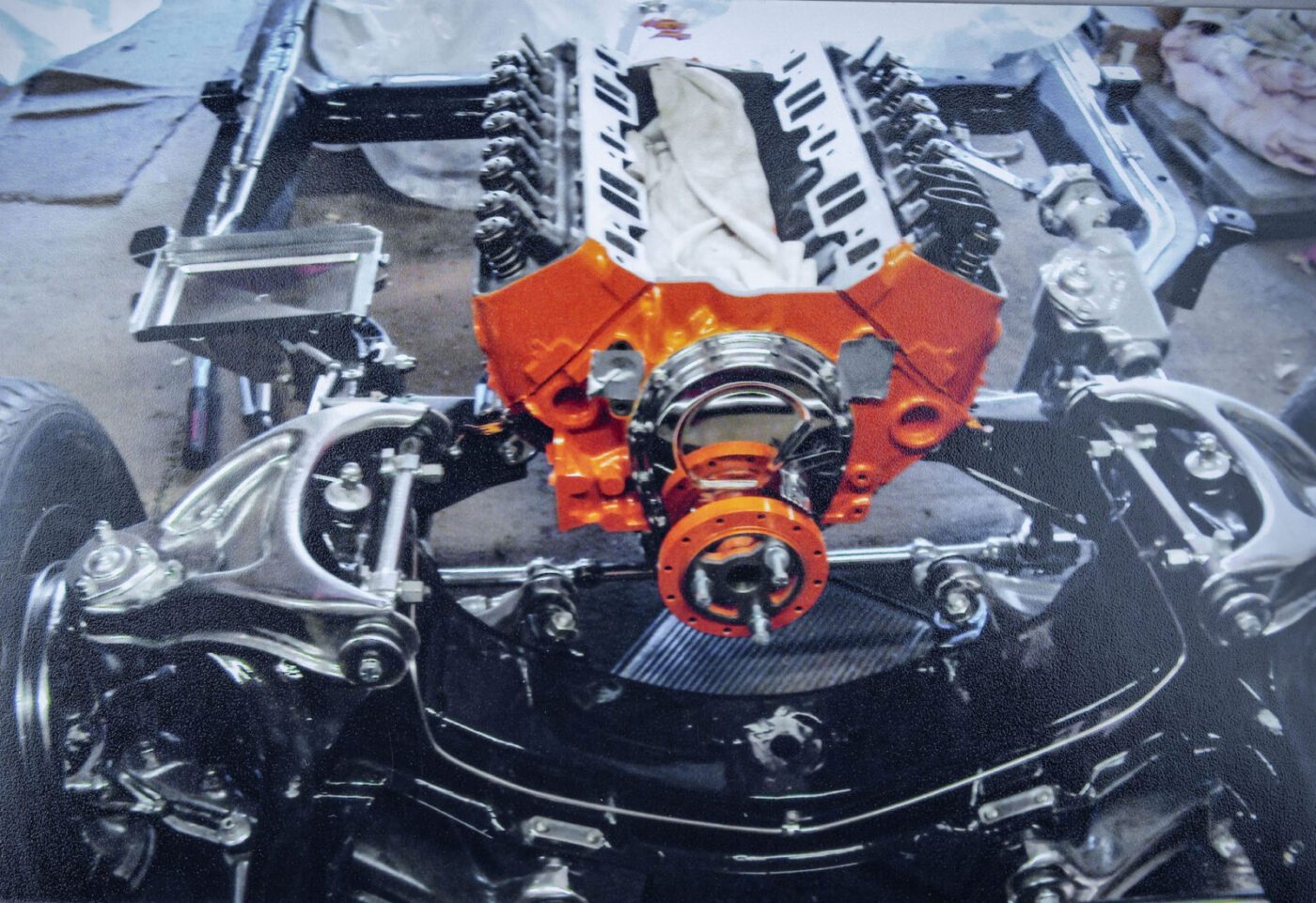
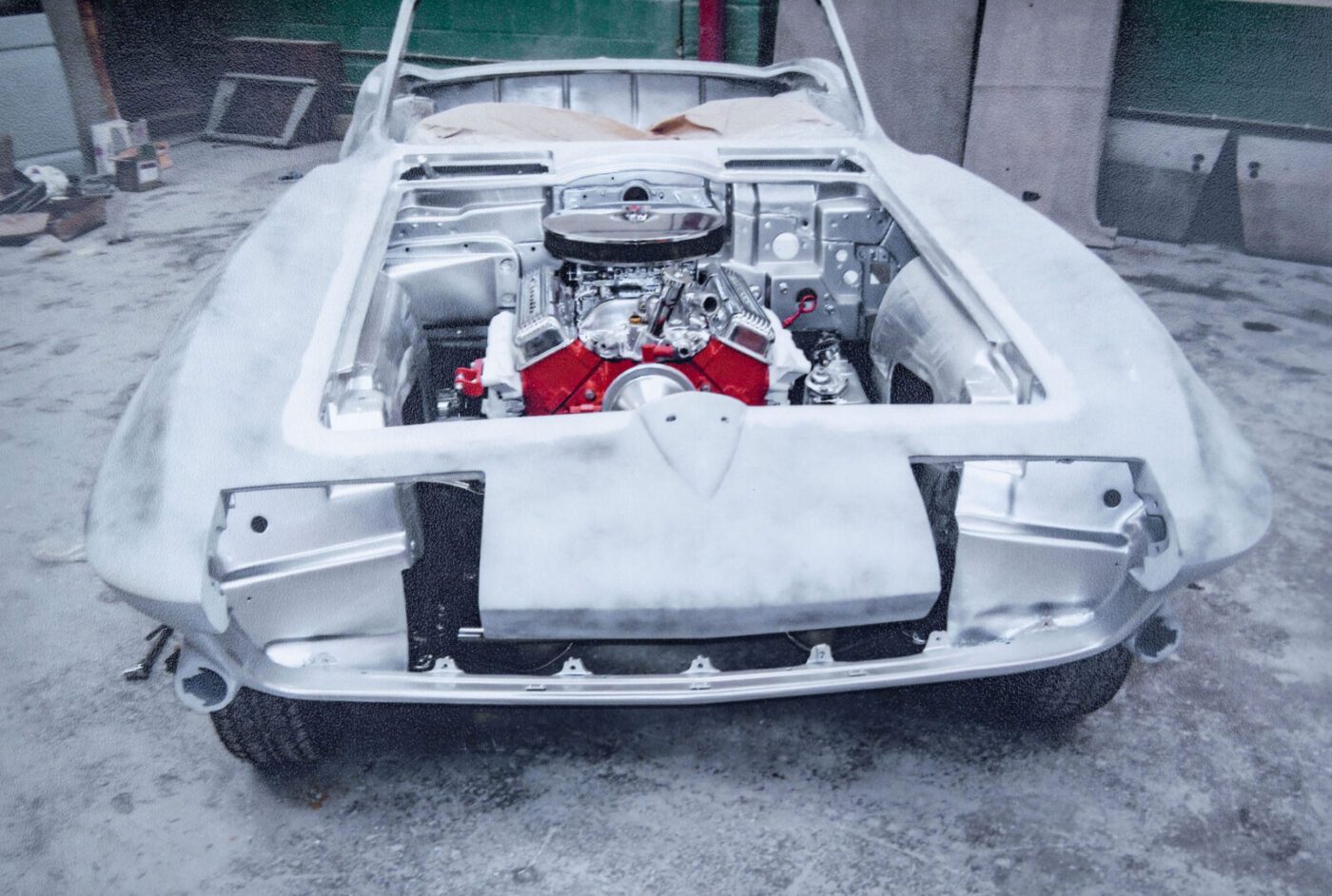
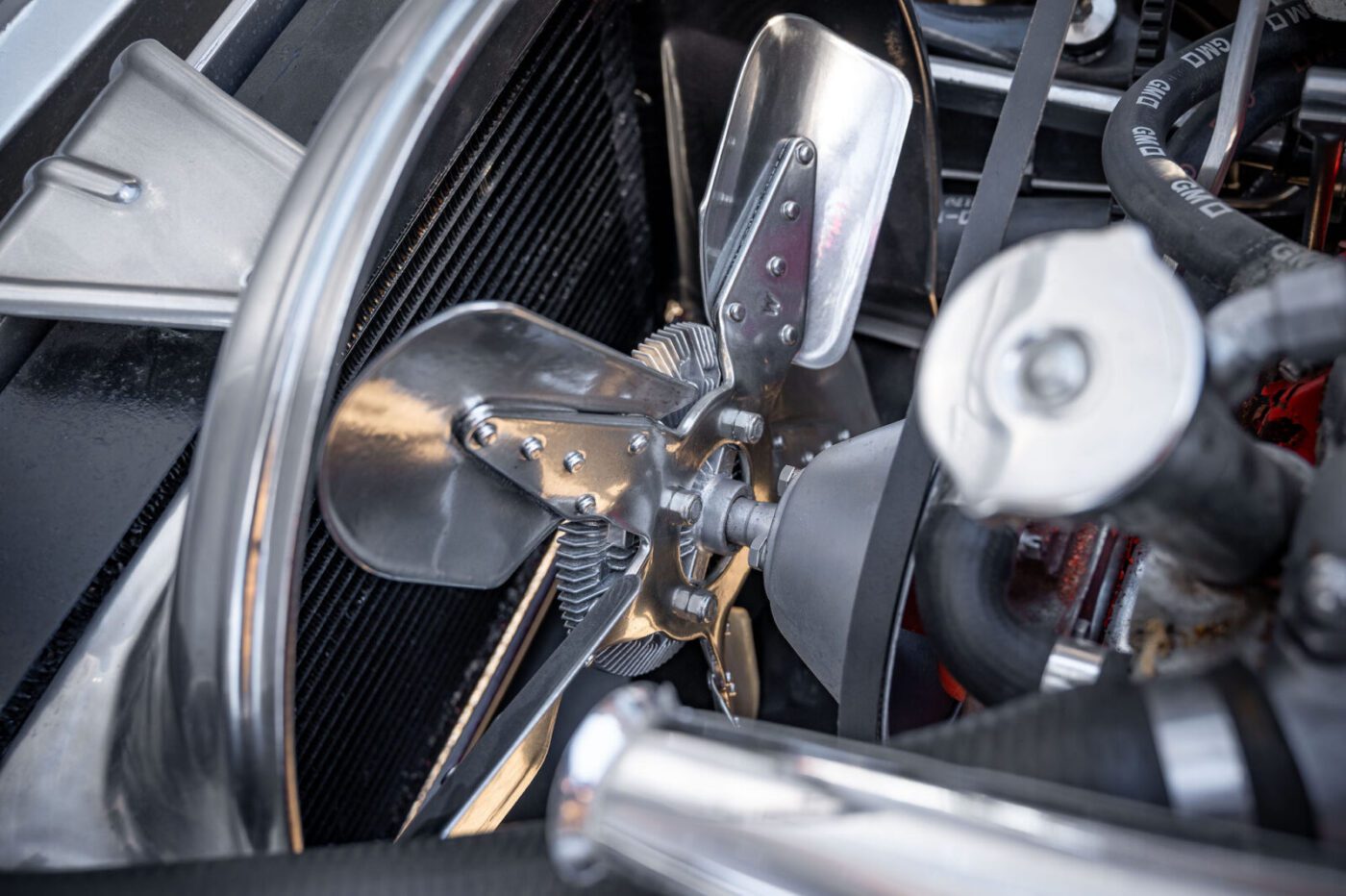
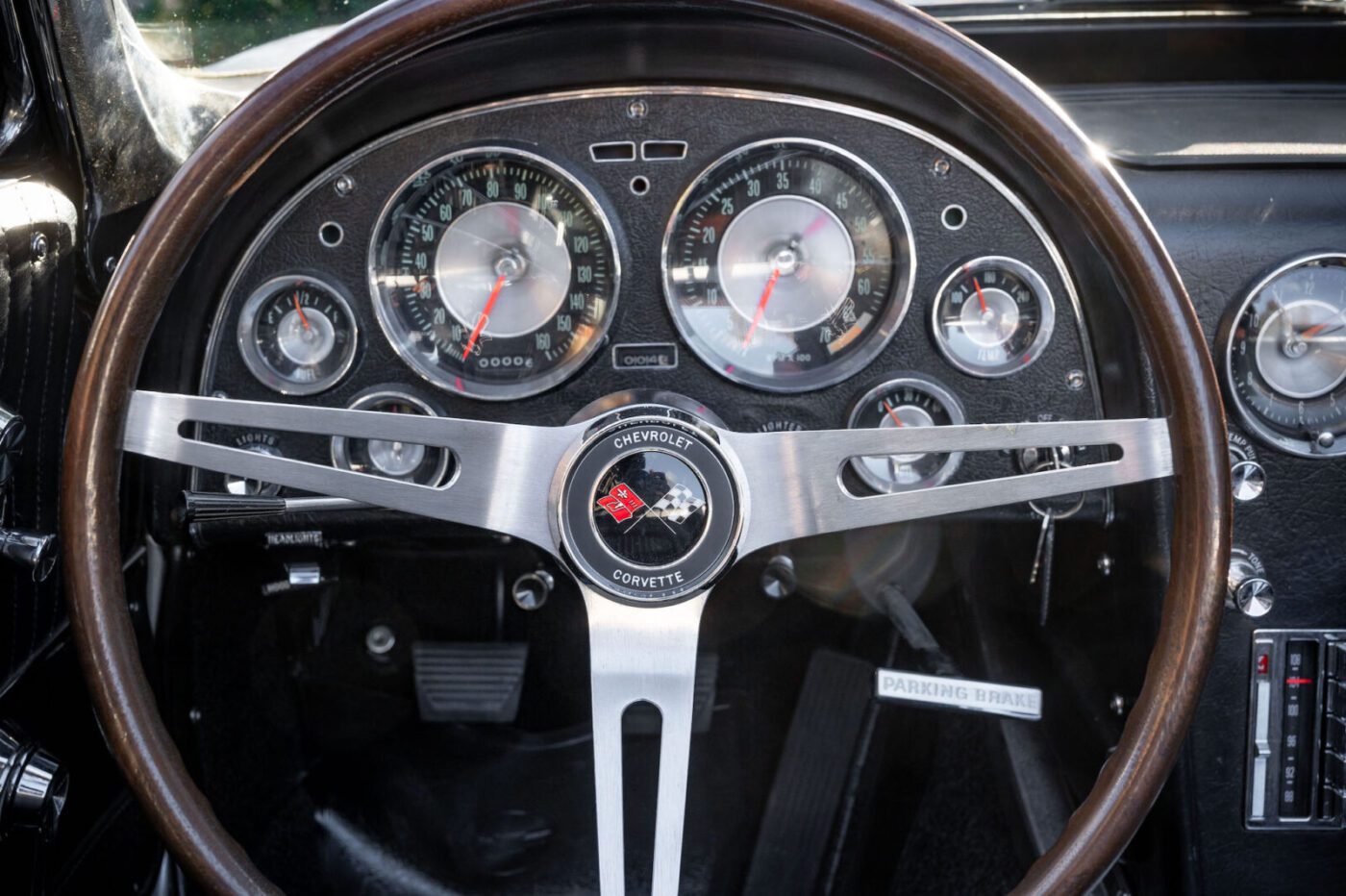
He discovered that the bores were an eighth of an inch shy of the Sting Ray’s usual 4-inches, even though the engine number on the block was correct for a Corvette.
“I thought I might as well have it bored to 4-inches because that’s what they do in the factory, with new pistons and rings.”
It would take too long to list everything Albie renewed or refurbished on the car, but it included the suspension, adding a roll bar to the back and a heavy one on the front; brakes, associated cylinders, and stainless steel brake pipes; a new petrol tank; new bearings and cam bearing head; skimmed flywheel; a high volume oil pump; an Edelbrock timing chain; entirely new electrics; and a stripped down and rebuilt 4-speed gearbox.
Fresh lenses on the dashboard replaced the old cracked ones, and even the dials got new needles after the rev counter needle broke off the first time Albie started the engine.
The final piece of the jigsaw, only completed very recently, was a new hood cover.
“I can’t think of anything on there I haven’t done,” says Albie, “and it runs better now than when I first got it, although it doesn’t start easily in the morning when it’s cold.”
So how did all this take 22 years? In short, the need to earn money got in the way.
“I worked for myself as a marine engineer, and in that sort of work you could be in Aberdeen or anywhere in England,” says Albie. “But then, all of a sudden, the firm I was doing a lot of work for went pretty big and they were all over the world, and so was I.
“They said to me once ‘we’ve got a problem on a boat in Perth’, I assumed up in Scotland. It was Perth, Australia, but I’d already said I’d do it so I had to go to the Australian embassy to get a visa. I left at 6pm on a Tuesday, got to the ship at 3pm Thursday afternoon, was there for a day, and came back.”
There were also times when Albie would not so much lose interest in his project, but lose focus.
“I used to start something, then move on to something else and after a few hours I’d not done anything,” he explains. “So I had to start concentrating on what I was doing, just do one bit at a time and then move on. And also stop polishing bits that no-one was ever going to see!
“In the past six months it accelerated. I just thought ‘it’s got to be done, I keep putting it off and putting it off’.”
The restoration also helped allay Albie’s long-held fears that there was something “iffy” about the car, which was imported in 1982 and given a W-plate by DVLA.
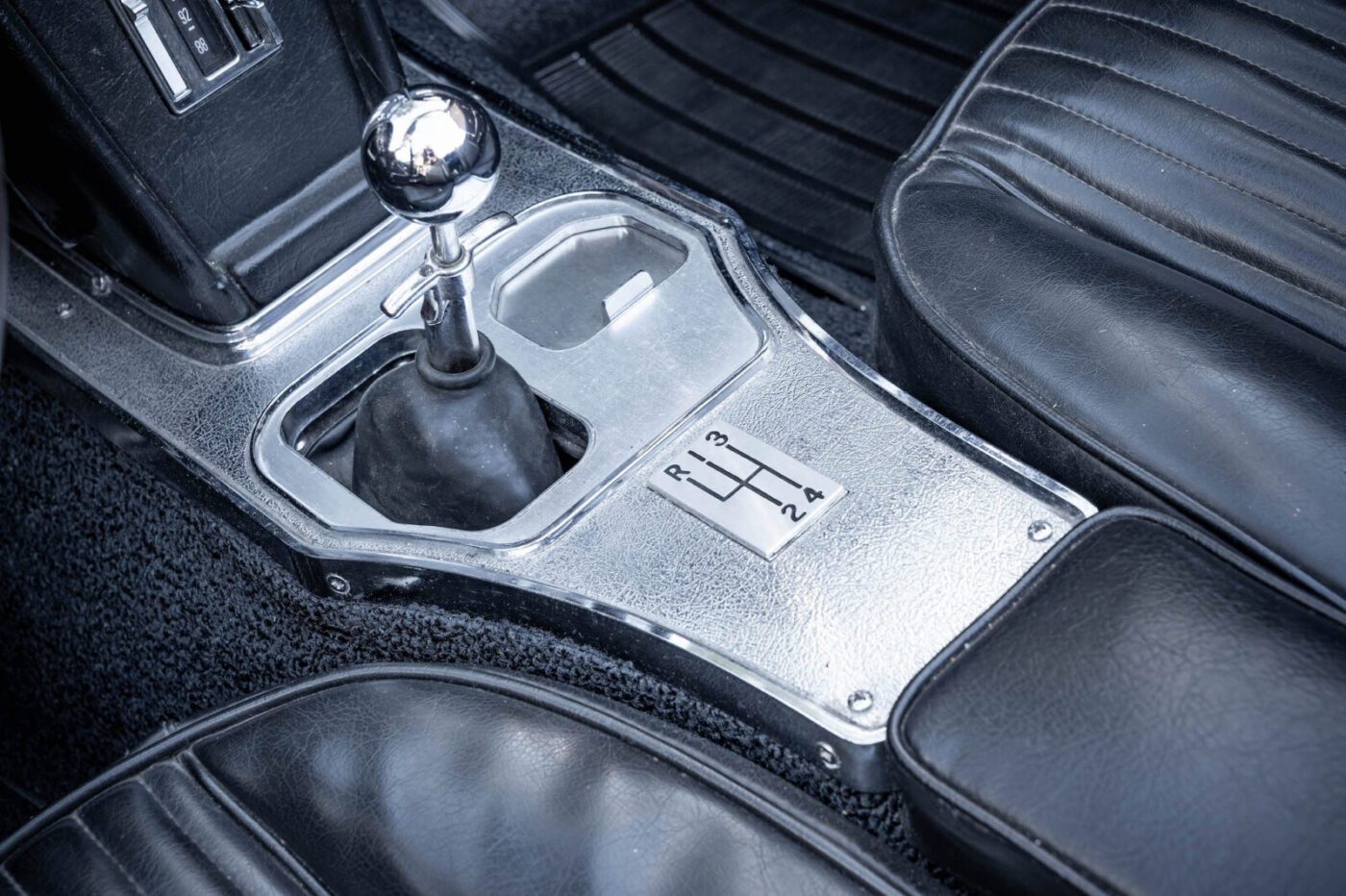
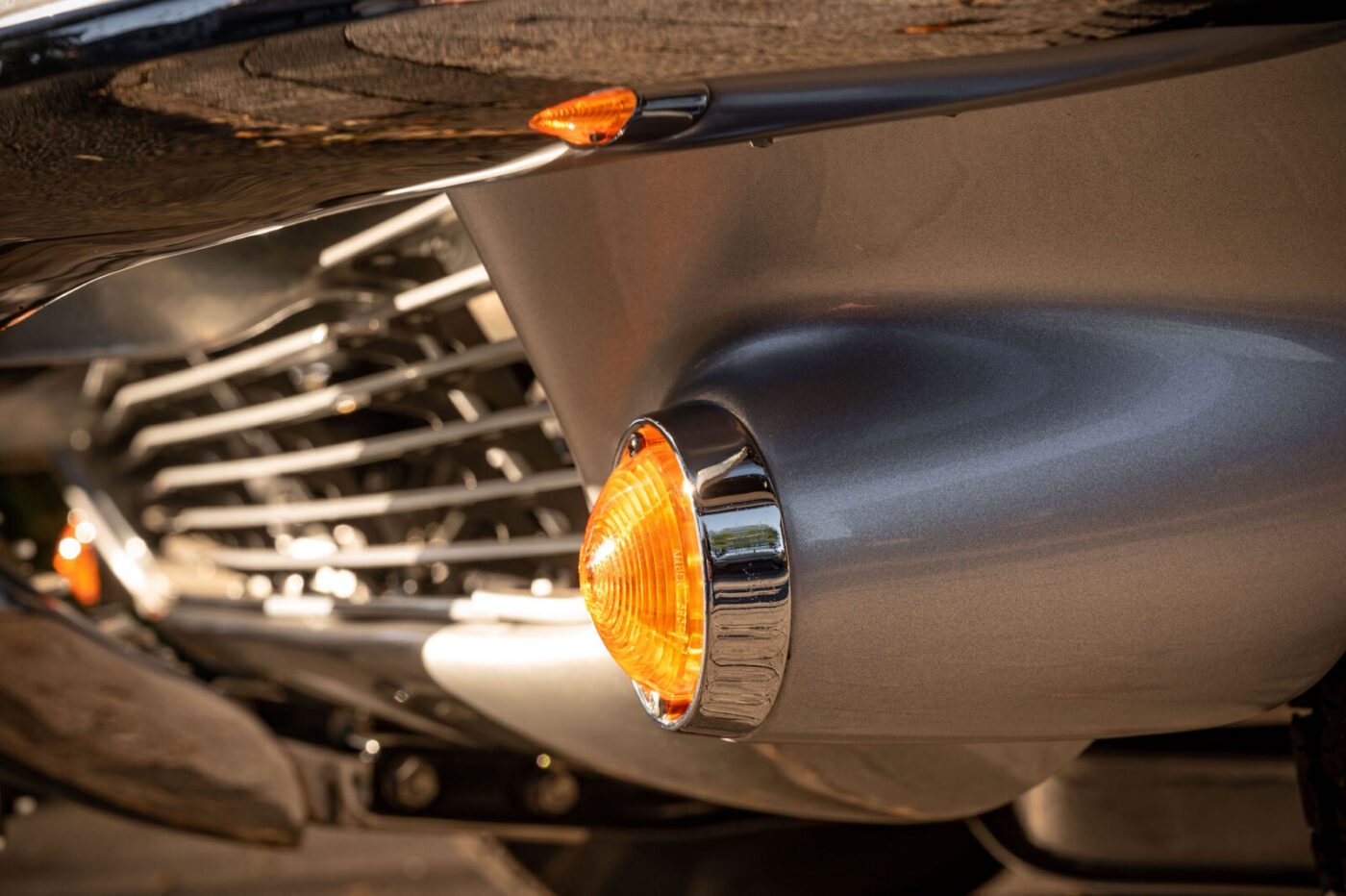
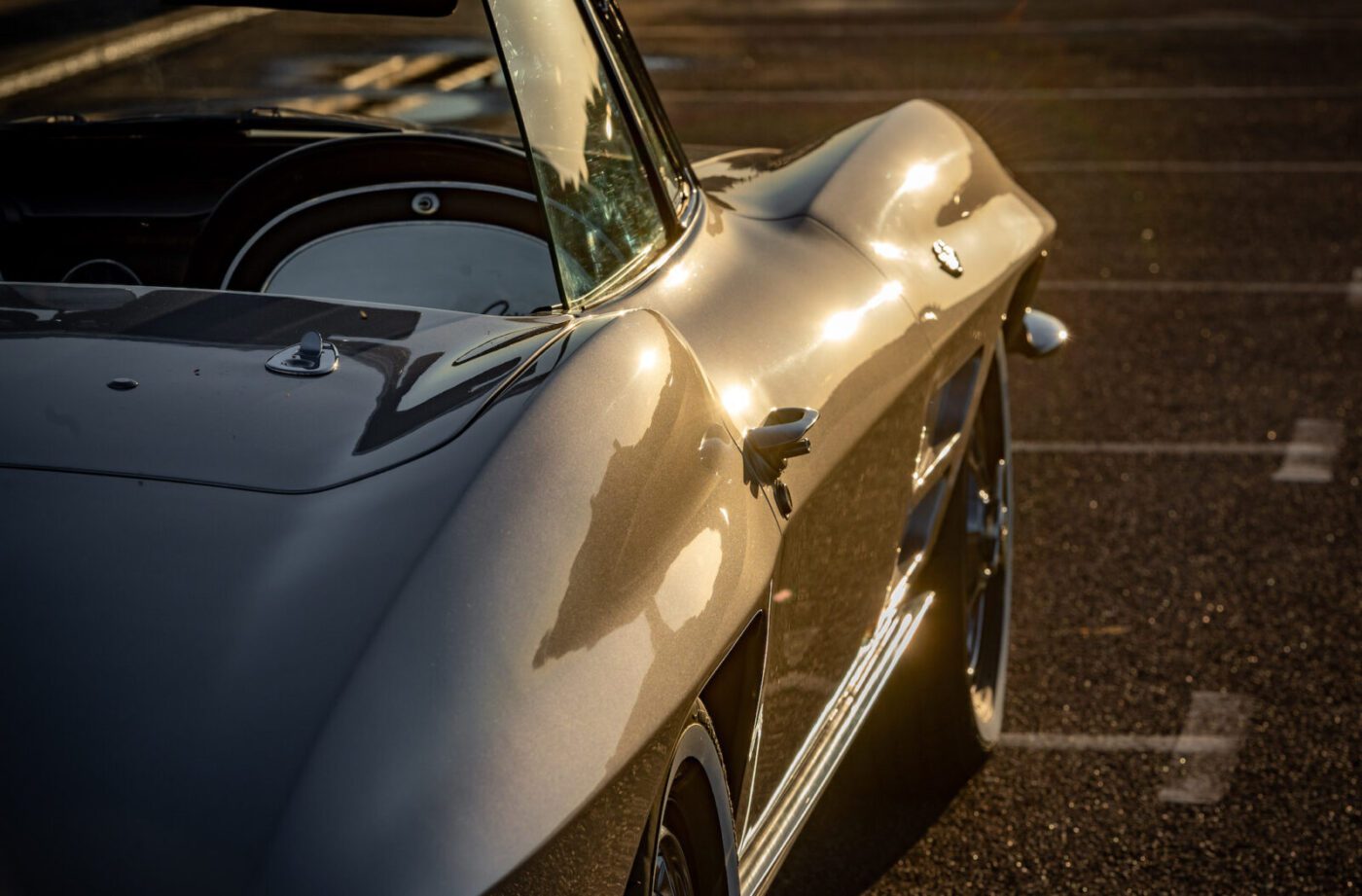
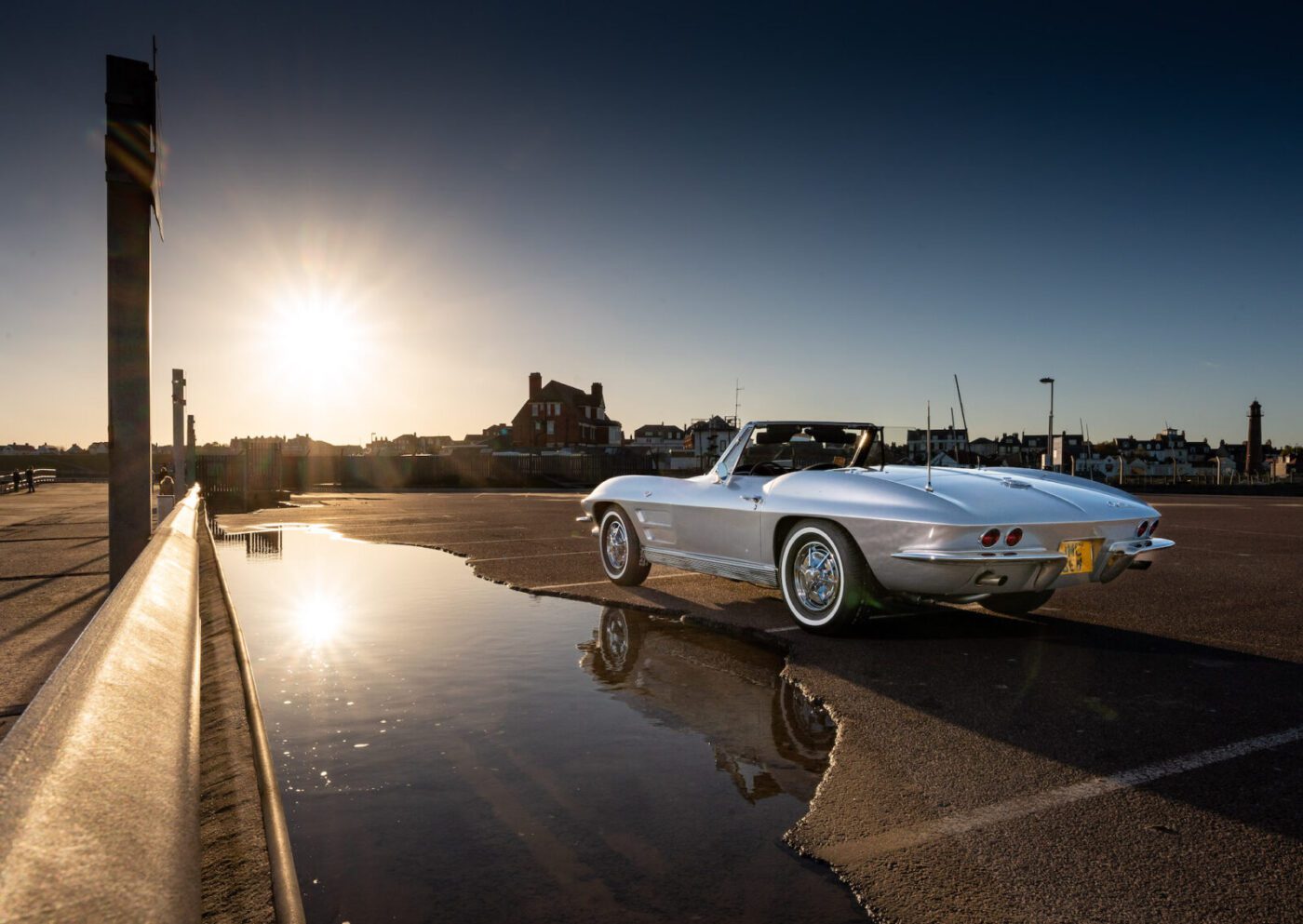
“I always had a feeling that car had been pinched, I don’t know why,” he says. “It didn’t belong to Ray, it belonged to his customer who was having another ‘63 Corvette done up and he needed to sell that to finish it. He was from London – I met him once after I had the car, and I didn’t like him, so I just had a feeling there was something iffy about it.
“About three years ago I was using a firm called Paragon in America and they wanted the VIN number for some parts. They couldn’t find it in the books, and I thought ‘do you know, it is nicked’.
“The bloke said there was someone else coming in that afternoon who knew more about it, and he had another look and did find it in an older book. It was built in November 1962, so at least I know it’s real and not pinched.”
With the sun starting to dip lower in the sky, we head over to a car park near Gorleston beach for pictures, and Albie reflects on two decades of labour.
“It’s definitely satisfying to see it finished,” he says. “I could go in the garage and not think about anything, just enjoy myself doing what I was doing. It was my hobby, the only hobby I’ve ever had.
“I’m going to enjoy it now, and I’ll drive it as long as it’s still comfortable for me.”
We’ve been parked for a few minutes when a cyclist makes his way across the car park. He had seen the Corvette drive past, lost it, and hunted us down.
He just wanted to gaze at it for a while, glinting in the sunshine, and take a photo on his smartphone.
It looks like Albie and Heather will have to get used to being followed again…

